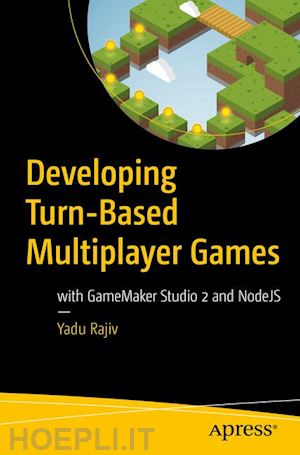Chapter 1: An introduction to Game Maker Studio 2
Chapter Goal: This chapter helps the reader get started with GMS2, how to download and install it, getting started with a project, an overview of the interface (which will act as a reference later if need be)
No of pages: 20
Sub -Topics
1. Downloading and installing GamerMaker Studio
2. Breaking down the interface - where to find what/what does this button do?
Chapter 2: Chapter 2: Introduction to GML
Chapter Goal: This chapter serves as an introduction to GML, what is new in GML in GMS2 and how to get started with writing code. This chapter will not be in-depth and will not cover all the functions available in GMS2, but will be a language overview by creating a small game.
No of pages: 40
Sub - Topics
1. Writing code in GMS2 - Scripts, Objects and Events
2. Data Types and Variables and Scope
3. Assignments and Expressions
4. Arrays and Data Structures
5. Language Features and Program flow control statements
6. Functions
Chapter 3: Making your first game
Chapter Goal: The goal of this chapter is to start on our main game, but a single player version of it. It starts off with a game design process where we plan well in advance what we are going to do; and moves on to talk about how to translate ideas from paper to a prototype. We then move on to build the game from the prototype, adding more complex behaviors and features.
No of pages : 70
Sub - Topics:
1. Game Design 101 - a reusable process/framework
2. Planning your game
3. Rooms, Sprites and Objects
4. Building a single player version
5. Getting the core mechanics
in place
6. HUDs, Menus
and more
Chapter 4: An introduction to NodeJS
Chapter Goal: This chapter introduces the reader to NodeJS and how one can get started with it. Some level of JavaScript knowledge is required. We will setup a small http server and work with Express.
No of pages: 15
Sub - Topics:
1. Installing NodeJS
2. Your first program
3. Extending the server with express
Chapter 5: Talking to your server
Chapter Goal: This chapter focuses on integrating our game with our NodeJS server. At first, we will create a feature which reads a list of news updates from the server and display it when the game loads. As a second exercise, we try to read and post a high scores table.
No of pages: 40
Sub - Topics:
1. Getting data - A daily news and updates ticker
2. Setting data -
A simple high scores page
Chapter 6: Introducing the multiplayer game
Chapter Goal: In this chapter, we will implement the game logic on the server – finding a player, starting a game session, playing the game, syncing data etc.
No of pages: 50
Sub - Topics:
1. Representing the player and their data
2. Finding a player
3. Playing the game on the server
4. Game session – syncing data across the server and clients











